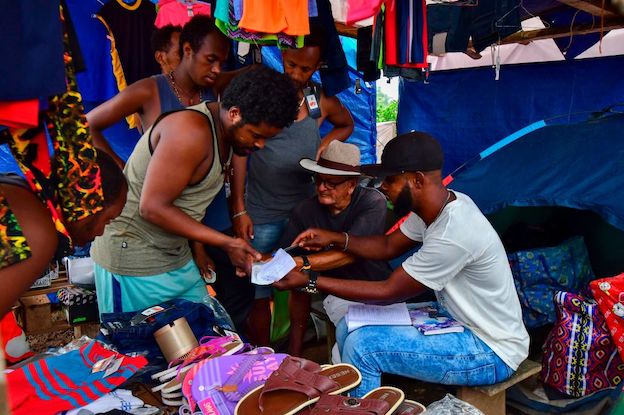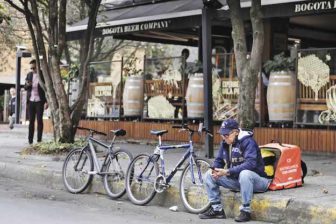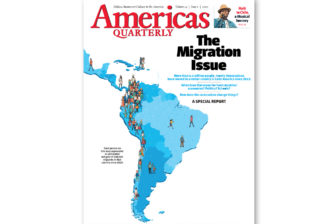I was sitting at my desk at the Palacio Bolívar, a world heritage site and home to Panama’s Ministry of Foreign Affairs, when an adviser jumped in and shared the news: Nicaragua had closed its borders, and hundreds of migrants trying to cross Central America on their way north would be unable to get through. It was 2015, and Costa Rica was holding migrants in large numbers, as was Panama.
During our administration’s mandate from 2014 to 2019, over 80,000 undocumented migrants crossed Panama. More than half of them came from the Caribbean, mostly Haiti and Cuba, and around 30,000 from Africa and Asia. Today, data from international organizations suggests that around 3% of the world’s population, or 250 million people, are living in a country other than their own, an increase of almost 50% since 2000. These include both migrants and refugees.
With historic numbers of people migrating in Latin America today, the region could turn this huge challenge into economic opportunity. If well managed, these migration flows can create growth.
Venezuelan migration
Migrant flows are not new to the region. Panama itself was witness to a large influx of Central Americans fleeing the wars in the region during the 1970s and 80s. A similar situation related to the Colombian conflict has persisted for decades. Now, the phenomenon that requires our attention, particularly due to its potential to get worse, is the large exodus of Venezuelans fleeing their country as a result of its acute humanitarian, political and social crisis.
The World Bank estimates the current cost of additional education, health, water, early childhood care, humanitarian aid, employment and institution-building resulting from migration from Venezuela at between 0.2% and 0.4% of Colombia’s GDP. Among the steps the Colombian government is taking to face the challenge are a pledge drive to rally financial resources and an advocacy campaign to make the business case for integrating new migrants, especially in light of the increase in demand for goods and services resulting from the influx.
Extracontinental migration to the Americas
The migration challenge facing Latin America is enormous. Absorbing and incorporating large groups of Venezuelans, Haitians, Salvadorans and other neighbors into new systems, cultures and economies will test governments, the international community and the private sector alike.
We must not, however, ignore a different challenge, which has been present for many years: the transit through Latin America of people from other regions. These includes migrants from Africa and Asia who travel to South America and literally walk their way north. Citizens of Nepal, India, Pakistan, the Congo and elsewhere have perished while trekking through our jungles in search of what has historically been called the American dream. Human trafficking, crime and other dangers are part of this phenomenon.
Panama works hard on the fight against drug trafficking and illegal migration at its borders. However, the dense jungle at the border with Colombia makes total control impossible. Undocumented migrants are stopped at entry points to the fullest extent possible. But back in 2015, the government made the decision to treat those who had managed to cross into our territory as humanely as possible and in accordance with international agreements. Thus, in agreement with the Costa Rican government, migrants were given shelter, fingerprinted for security reasons and sent to Costa Rica in manageable numbers. This approach also prevented human trafficking within our borders.
Immigration in Panama
Around 6.4% of Panama’s population are immigrants, the third highest percentage in Latin America. However, recent flows have sparked anti-immigrant sentiments similar to those that have sprung up in other countries around the globe. The current situation stems from the closing of the border in Nicaragua in 2015, which led to a massive humanitarian effort and temporary settlements providing shelter, food and medicines to the stranded migrants.
Studies led by Ricardo Hausmann of the Harvard Growth Lab support the notion that more immigration is needed in Panama in order to maintain and promote the economic growth experienced in the last decade. These studies have been shared in Panama and received well by the private sector, but not so well by some civil society groups that argue that foreign-born workers lead to unfair competition for Panamanians. The debate is ongoing.
As a strong supporter of the benefits of immigration, and in recognition of the fact that flows are healthy, humane and unstoppable, I hope Panama welcomes newcomers. Migration and immigration cannot and should not be stopped, for economic, security and, above all, humanitarian reasons. We should, however, aim to achieving more orderly, legal and safe migration. Governments, civil society and the private sector should collaborate with this objective in mind.

)






